Recent Advances in Natural Product Based Nanostructured Systems
A special issue of Pharmaceuticals (ISSN 1424-8247). This special issue belongs to the section "Natural Products".
Deadline for manuscript submissions: 28 June 2024 | Viewed by 7001
Special Issue Editors
Interests: nanotechnology; biochemistry; cancer; funghi
Special Issues, Collections and Topics in MDPI journals
Interests: nanomedicine; lipid nanocarriers; oral administration; metastasis prevention
Special Issues, Collections and Topics in MDPI journals
Special Issue Information
Dear Colleagues,
Nanotechnology has presented innovative solutions to many of humanity’s needs over the last few decades. Medicine, environmental sanitation, engineering, power generation, agriculture, and many other fields have benefited from nano-based solutions. However, the continuous development of nanotechnology depends on high-performance materials. In this regard, nature is an incredibly rich source of chemical compounds, many of which can be used either to design new products or to replace non-sustainable materials in products and processes. Natural compounds are not only intrinsically sustainable but can also present superior biocompatibility, enhanced effectiveness and better safety. The use of these compounds in nanotechnology can be also inspired by their in situ role in the organisms from which they are derived. Indeed, many naturally occurring nanostructures, such as films, membranes, vesicles, and viruses, are based on biomolecules specially selected over millions of years of biological evolution for performing their function at the nanoscale. Moreover, many drugs and other bioactive compounds derived from natural sources can be loaded into nanosystems in order to achieve enhanced effectiveness and safety. Therefore, this Special Issue entitled "Recent Advances in Natural Product-Based Nanostructured Systems" is dedicated to collecting works on: 1) biomimetic and bioinspired nanostructures; 2) green nanotechnology; and 3) nanocarriers for bioactive compounds.
Dr. Luís Alexandre Muehlmann
Dr. João Paulo Longo
Guest Editors
Manuscript Submission Information
Manuscripts should be submitted online at www.mdpi.com by registering and logging in to this website. Once you are registered, click here to go to the submission form. Manuscripts can be submitted until the deadline. All submissions that pass pre-check are peer-reviewed. Accepted papers will be published continuously in the journal (as soon as accepted) and will be listed together on the special issue website. Research articles, review articles as well as short communications are invited. For planned papers, a title and short abstract (about 100 words) can be sent to the Editorial Office for announcement on this website.
Submitted manuscripts should not have been published previously, nor be under consideration for publication elsewhere (except conference proceedings papers). All manuscripts are thoroughly refereed through a single-blind peer-review process. A guide for authors and other relevant information for submission of manuscripts is available on the Instructions for Authors page. Pharmaceuticals is an international peer-reviewed open access monthly journal published by MDPI.
Please visit the Instructions for Authors page before submitting a manuscript. The Article Processing Charge (APC) for publication in this open access journal is 2900 CHF (Swiss Francs). Submitted papers should be well formatted and use good English. Authors may use MDPI's English editing service prior to publication or during author revisions.







